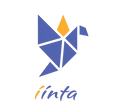Health & Wealth

Health & Wealth
Maslow’s Hierarchy on Becoming Ourselves
Author/Editor : Jennifer J. Lacelle
Date : August 18, 2021
There are many things’ people do, or attempt doing, to try changing their lives. Some people grind themselves to the bone while others take classes on how to improve their lives. The real question is what drives us to be better, to become the ultimate versions of ourselves?
Abraham Maslow spun his theories about human nature and needs in a positive direction. His theory was defined in 1943, though some aspects have not been entirely proven. Each step in his theory must be completed before someone can move on to the next, higher, level. In some cases, it’s been shown that the levels don’t necessarily have to be reached in order to get to the next level. However, in the majority of samples examined, there is a strong basis for Maslow’s theory and it’s still widely accepted, taught and understood.
Base Level: Survival
Level one, the foundation of the hierarchy, is to reach and meet the most essential requirements for life (air, water, sustenance and shelter) before moving on the second level, then the third, fourth, etcetera. Without one of the basic needs, survival is zero.
One argument against would be about people who are living on the streets. They don’t have a home to reside in, meaning they lack shelter.
However, it should be noted that even they find ways of protecting themselves from the elements in some way or another. Whether it’s a tent, tarp, garbage cans, or building overhangs, etc. They seek protection from the elements of nature because they need to for survival. In Maslow’s idea, the stages can be shown in a pyramid form:
Without hydration and energy, our brains become unfocused and limbs weakened. There’s a reason athletes stay hydrated and well-fed.
How can someone who is lacking food and water able to think? When we experience poor health we cannot proceed because our focus is elsewhere. Even Tony Robbins, internationally acclaimed inspirational speaker, includes health in his philosophy to achieving maximum potential.
The National Heart, Lung and Blood Institute suggests eating a variety of products. They put a strong focus on fruits, vegetables, whole grains and low to no fat dairy products. They furthermore recommend getting your daily dose of protein through beans, fish, poultry, nuts and lean meats.
Not only that, but people should be careful about how much they eat at each meal. There’s a balance between too much and too little. It’s also important to note that trans-fats, sugars and added sodium can be detrimental to your health as well (when in excess).
Climb the Ladder to Safety Needs
Once the foundational needs are met, people can begin applying the second level: safety and security. This can be financial, medical, psychological or physical — it can come right down to what we wear on a bad weather day or shopping online, there’s a cancel button which creates a safety net for users. The need for security influences our behaviour. It’s the fight or flight instinct: do we run away from a shadowy figure in the alley or do we stand our ground? When buying a vehicle, we ask about the risks, fuel mileage, defects, warranties, airbags and other safety features. These are things we naturally consider.
Everything we do, including the base level, is about how to keep ourselves safe to some degree. The environment we surround ourselves in is essential to this security net. What happens when we don’t feel safe?
The portion of your brain that sounds the alarm (amygdala) goes into high alert when you perceive a threat to your safety. Usually when this area of the brain lights up, we shut down or freeze as a means of protecting ourselves. Can you imagine how that would look if we’re consistently in “freeze” mode?
In such case, would it even be possible to move on to the next level in the hierarchy? No. We are literally, and figuratively, stuck. It also helps in creating the release of the hormone cortisol, which is a stress response from the adrenal glands that sit above the kidneys.
It’s part of the fight or flight response in the body. Constant cortisol has dangerous effects on the body, including the rising levels of stress, anxiety, immune disorders, and inflammation.
The Middle Wrung: Love
And Belonging
However, people crave some sort of human connection with others. Romantic relationships are one of the top desired relationships between people.
But there are so many others… teacher to student, friendship, familial, community, self, professional, etc. It’s been shown that a lack of human connection can decrease our overall health.
In a condition called Skin Hunger, more related to actual physical contact than emotional bonds, it’s shown that those with less contact have decreased health (overall) and increased anxiety (which we’ve already established has terrible effects with cortisol).
According to Stanford University, there’s a new study that indicates a lack of social connection as being more detrimental to human health than obesity, high blood pressure or smoking. There have been numerous studies showing that those with strong social connections have lower mortality rates than those with fewer.
This can be especially marked in those with pre-existing medical conditions.
It can be shown that by being socially connected, people are more likely to experience less anxiety or depression, and lower inflammation levels in the body. What increases are immunity, empathy, and self-esteem.
We’re Next Level: Esteem
At this stage we have obtained: Food, water, air and shelter
Security
Connections
It’s easy to conclude that in general we’re feeling pretty great by the time we’ve reached this stage. So, what does that have to do with self-esteem?
There are two sections to this phase. One is where we seek internal validation (intrinsic values, dignity, independence, etc.). Two is the need to be respected by peers or those around us (external validation, reputation, status, etc.). People need to feel as though they’re making a change in the world by being recognized for their accomplishments.
This level holds-hands with the social connection this way. Fulfilling intrinsic desires provide a deep sense of satisfaction and happiness. The prize is the gratification, whereas external motivators often have something attached to them, like a promotion, money, vacation, etc. Alternatively, external motivation can be used by the need to avoid punishment.
While both are functions used to increase human motivation, the key differences are when to use extrinsic versus intrinsic. For example, if someone already enjoys a particular task then providing an extrinsic motivation won’t affect their level of satisfaction with the activity. Though they have discovered that receiving recognition, rather than rewards, can increase intrinsic motivation.
Reaching for the Top: Self-Actualization
We’ve been intrinsically motivated to reach this peak performance because we’ve worked so hard to get to this level. We can’t, or won’t, let it slip through our hands. We recognize our limitations and accept ourselves as we are; we help not only ourselves intrinsically, but the world around us; we do things spontaneously because we see ourselves and the world realistically;
we require freedom and privacy where we can improve ourselves; we consistently appreciate the small things around us; and we enjoy the experiences that foster fulfillment, spirituality and significance. Essentially, it’s when people truly experience all the wonder and joy offered by the world.
The long and short is that we are doing precisely what we are designed to do with our lives, becoming our ideal self.
